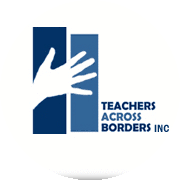TWB-SA 2004
Jennifer Hong – Punahou School – Honolulu, Hawaii.
Summer vacation typically brings relaxation, summer school, time with family and friends, and rejuvenation for the new school year. But vacation time in South Africa brings an opportunity to learn different techniques and skills in math and science, a unique way to make new friends with colleagues from halfway around the world, and a chance for students to break the cycle of poverty that they know all too well.
This summer, 7 teachers from Hawaii traveled for 30 hours to the beautiful country of South Africa in the hopes of forging friendships and working with colleagues to achieve a common goal: to upgrade the level of instruction in schools that serve mostly black populations. We worked with hundreds of students preparing to take the matriculation exam (similar to our SAT test but significantly more difficult) and by offering weeklong workshops to their teachers. All of these students and teachers were on their winter vacation, many of them walking several kilometers in the 40 degree weather every day to attend.
I joined Punahou teachers Yunus Peer (director of the program), Jim Clarke, Yukio Hamada, and Jim Metz from KCC, Joan Rohrback from Sacred Hearts, and Erin Wilson from Kamehameha (also Punahou ’88). We prepared handouts to guide the teachers in finding new ways to show their students how to master the objectives set forth by their national curriculum committee. We also completed several past matriculation exams and prepared shortcuts, theorems, and sample problems that would help the students.
Many of the topics on the exam and in the national curriculum were areas in which most South African teachers felt underprepared. They shared their methods of teaching these areas and sometimes admitted that they did not have any method at all for teaching it, nor did they have the background information on the topic to create a method (e.g. tesselations). We tried to share what we do in Hawaii while validating what they did and helped them see how they could manipulate the methods they already had to serve the needs of their students.
While working with the teachers, we found out that on the matriculation exam, thousands of students would leave certain problems blank (many times a geometry proof that they had never seen before) and this immediately caused them to lose about 40 points out of 200, right from the start. Their teachers, most of whom were educated under Apartheid, were denied an adequate math and science background because many government officials believed that the black child, destined to become a laborer in a white-owned society, would never need those skills in her life. These children went on to become teachers, never gaining the knowledge to adequately teach their students. They tried their best, but had no control over the large failure rate of the exam and their students’ inability to get into college and earn the scholarships needed to attend.
Many of the teachers work in schools where the students don’t have supplies such as paper, pens, worksheets, rulers, and compasses. So it is no surprise that they have no calculators, computers, copying machines, or lab equipment. We tried to show them ways they could improvise and still reach some of their objectives mandated by the government, one of which included the use of technology!
Though their class sizes average 60 students, they are blessed with a student population that is eager to learn and have mastered the art of working together toward a common goal. We witnessed this while teaching 400 students at one time in a packed auditorium in Port Shepstone, some standing in the back of the room for over 5 hours. Those who did not come with supplies wrote on paper bags, others passed pens back and forth after completing a problem. These were quiet, polite, and eager 17 year olds, thrilled when they completed a sample exam problem for the first time.
The students thanked us by working hard, asking questions, and at the end with their awe-inspiring gift of song. When you look out at 800 seniors, all of whom were there by choice, you see the hopes and dreams of the youth of South Africa and you want so much to do everything you can to ensure that all of them are given the opportunities they deserve.
We sincerely hope that the time we spent and the handouts we prepared gave the teachers and students the knowledge they needed in the areas of difficulty, but more importantly, we were pleased to see that their faces showed renewed confidence in their abilities to innovate and reach their goals given the resources they have. Many of us were honored when the teachers expressed that they were anxious to go back to the classroom to try everything they learned.
We teachers from Hawaii did not leave empty handed. We were inspired, encouraged, and moved by the love of the South African people and the steps they have taken to rise above oppression rather than look back and complain. I am reminded of the saying, “If you truly want to feel rich, just count all the things you have that money can’t buy.” Many thanks to Punahou and the numerous sponsors of this program for providing and supporting this truly enriching opportunity.
